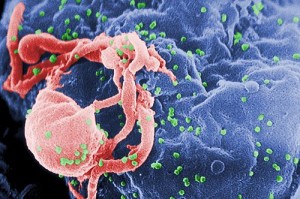HIV is unique among viruses in many ways. Here’s another: upon breaking into a cell, it erases evidence of its presence by exploiting a natural cellular “cleanup” mechanism. It thereby manages to dodge the innate immune system, the body’s first line of attack against invaders.
Investigators Judy Lieberman and Nan Yan, of the Program in Cellular and Molecular Medicine and the Immune Disease Institute, worked out how HIV does this and put together a counter-attack: disabling this cleanup mechanism. When they did this in cell culture, HIV’s cover was blown: an innate immune reaction was provoked, interferon-beta was produced and HIV replication was halted.
Could this lead to a therapeutic that blocks HIV from setting up shop in the body? Lieberman hopes so. Her lab is working on a topical microbicide that delivers gene-silencing RNA specifically into T cells and macrophages, the cells HIV uses as a gateway for invasion. (Lieberman’s group previously showed that a topical treatment using RNAi blocked herpes transmission in mice.) If that technology could be harnessed to silence the cleanup mechanism in those cells, says Lieberman, it potentially stop HIV infection before it gets started.
“There is a short window of time that lasts a week or two when HIV is just in T cells and macrophages in the genital mucosa,” says Lieberman. “That’s the window of opportunity.”
Read more on PCMM/IDI’s website. For those with subscriptions, or who’re willing to play, check out the News & Views piece in Nature Immunology.







